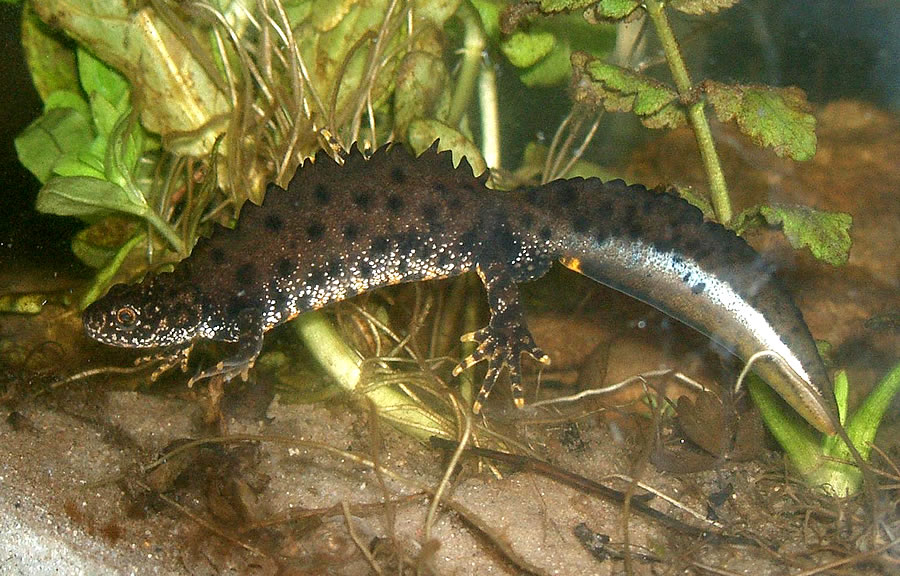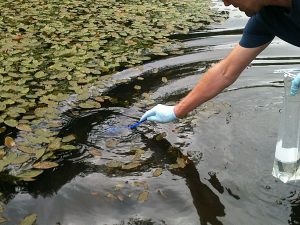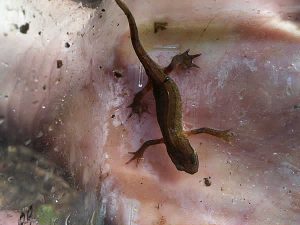
Great crested newts are protected by the Habitat Regulations and a license is necessary to disturb them. Melanie Findlay holds a great crested newt survey license for 5 years covering all of Scotland and which covers 10 agents or assistants. If great crested newts are present at a development site you will need to know how many? Are they breeding? What are the potential impacts of the development on the newts? How can impacts be avoided or mitigated?
There are now two approaches to proving presence of great crested newt.
Standard Field Approach
The first is the standard field approach which involves undertaking a number of different survey techniques throughout the survey season (March-June). Each pond or water body has to be visited four times during the newt survey season which is March to early June and two of these visits have to be undertaken in May. Survey licence conditions now steer field ecologists away from bottle trapping in Scotland due to animal welfare issues. Although bottle trapping is a technique to catch live newts, there are implications of the impacts of stress on animals which have been confined for several hours and handled. Bottle trapping can therefore only be undertaken when other methods are considered unsatisfactory. Surveys at night using torches are a mainstay for detecting the presence of great crested newts, as are searches for their eggs and netting surveys.
As well as undertaking surveys, a Habitat Suitability Index (HSI) can be used to assess the likelihood of great crested newts being present, and this can be cautiously used in the scoping process.
Water Sampling for eDNA
The second approach to determining the presence of great crested newts is to take water samples which are analysed in the laboratory for environmental DNA (eDNA). At the moment, it is recommended that this is undertaken during the peak of the active newt season (Mid April to end of June. It needs to be borne in mind that eDNA can be transported by water between ponds by linking channels and results may be misleading. EDNA surveys therefore need to be carefully planned. The sampling method requires a single visit to each pond where samples are taken according to a strict protocol. The samples are sent to one of a small handful of laboratories for analysis and a positive result is conclusive evidence of the presence of great crested newts.
eDNA is beneficial in many ways. It is a cheaper as it requires just one visit, although there are laboratory costs, and it can be done during the daytime and isn’t limited by conditions such as rain and mist. However, it needs to be properly planned in with your development schedule because if you get a positive result, field survey has to be undertaken to determine the size of the population of newts.
If you have great crested newts, mitigating can be as simple as seasonal timing of operations or may require measures such as the creation of new ponds and clearance of newts from an area prior to development. Either way, you will need a mitigation plan which is based upon your survey findings. We are happy to advise on the best survey solution for your surveys and/or mitigation and licensing of the development.
Further information

Collection of water samples for analysis of eDNA.

A male palmate newt with webbed rear toes.

